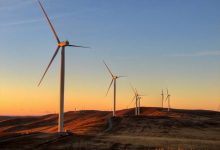Vectren, US energy company servicing the state of Indiana, has announced plans to shift from what is a nearly an all coal generation business to producing nearly two thirds of its total energy from renewable energy sources by 2025.
Announced on Monday during the company’s public stakeholder meeting, Vectren – which is a subsidiary of American Fortune 500 electric and gas utility CenterPoint Energy – revealed a final Integrated Resources Plan (IRP) which will serve to reduce the utility’s reliance on fossil fuels and lower its carbon emissions by nearly 75% on 2005 levels.
The company will retire or exit agreements involving 730MW of coal-fired generation, which will in turn avoid investments estimated at around $US700 million ($A1,011 million) which would have been required to bring their coal fleet up to comply with environmental standards.
With plans to retire or exit existing coal agreements by the end of 2023, the company hopes to make a significant dent in its lifecycle CO2 emissions.
Replacing its fleet of coal-fired generation will be between 700MW and 1GW of solar – some of which will be connected to battery energy storage – and another 300MW of wind energy.
The company estimates that it’s new plan will save its electric customers an estimated $US320 million ($A462 million) over the 20-year planning period.
“The IRP considers a broad range of potential conditions and variables to determine a preferred fuel mix which allows Vectren to meet future electric energy demand in a safe and reliable manner,” said Lynnae Wilson, chief business officer, Indiana Electric.
“Over the next several months, we will finalize our generation plan, taking into consideration cost, COVID-19 impacts, efficiency, and reliability while recognizing the need for flexibility given ever-advancing technology in a rapidly evolving industry.”
Ben Inskeep, the Principal Energy Policy Analyst at EQ Research, who monitored Vectren’s public stakeholder meeting, explained that Vectren’s sensitivity analysis found that even if solar costs were to increase by 30%, it would still not affect its cost-effectiveness.
“Using what we have learned from this IRP process, we will be pursuing a much larger percentage of renewable energy, as well as continuing to offer energy efficiency programs to ensure customers have options to use energy wisely,” Wilson said.
“Customer and stakeholder engagement were focal points throughout this very important process, and we appreciate the thoughtful insights offered which helped us realize this plan.
“We are committed to developing a transition plan that is responsive to our customers and the direction received from the IURC in its 2019 Order which considers the various risks and economic impacts of each step. We are confident this plan will assist in keeping customer rates reasonable while leaving room for flexibility as the future of electric generation continues to evolve.”
Vectren’s IRP also calls for the addition of 460MW of natural gas combustion turbines, however this is approximately half the natural gas capacity of the combined cycle gas turbine which was proposed in the company’s previous IRP, and will be designed to back up the renewable energy resources that will supply the majority of its customers’ energy needs.
“The proposed future portfolio further ensures southwestern Indiana remains in attainment for air quality and promotes additional economic development in our region where we live and work,” stated Wilson.
“Avoiding future coal maintenance investments will ensure local generation has a responsible renewable-to-carbon balance while ensuring the reliability our customers expect. We are incredibly sensitive to customer impact, and with stakeholder input, we feel this planning process has produced a cost-effective plan that moves us toward a future built on cleaner generation.”










